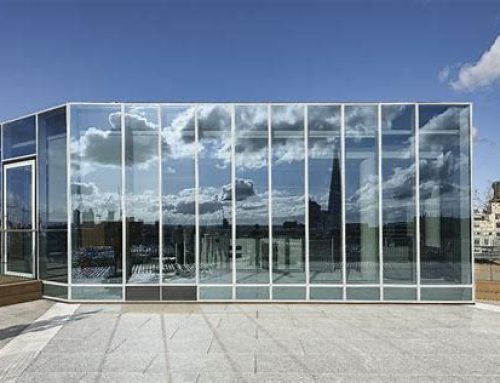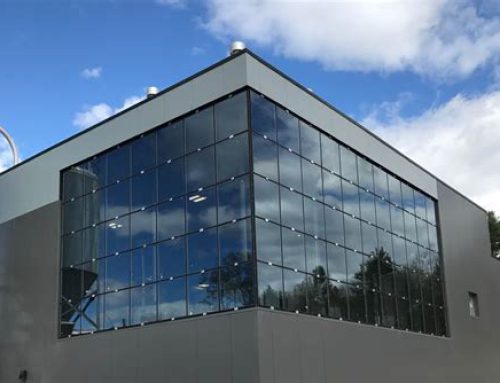How much to profile a glass wall

How much to profile a glass wall ,Glass walls have become an increasingly popular architectural choice, offering transparency, aesthetics, and functionality. Whether in commercial spaces, residential buildings, or even public structures, they provide an open feel, natural light, and a sense of spaciousness. However, determining the cost of profiling a glass wall involves several factors that go beyond just the material itself. Let’s delve into these considerations to understand how much profiling a glass wall might cost.
Material Selection:
The type of glass chosen significantly impacts the cost. Standard clear glass is typically the most affordable option, while specialized options such as frosted, tinted, or tempered glass tend to be pricier due to additional manufacturing processes or specific properties like increased durability or privacy features.
Size and Thickness:
The dimensions and thickness of the glass panels play a crucial role in cost estimation. Larger panels or thicker glass require more material and often entail higher production and installation expenses. Additionally, thicker glass might be necessary for specific applications like structural support or soundproofing, adding to the overall cost.
Customization:
Custom profiling, including unique shapes, curves, or designs, can significantly increase the cost. Intricate designs or patterns may require specialized equipment and skilled labor, contributing to higher expenses. However, these customized features can also add distinctiveness and aesthetic appeal to the glass wall, making it a worthwhile investment for many projects.
Installation:
Profiling a glass wall involves not only the material itself but also the installation process. Factors such as accessibility, complexity of the design, and site conditions can impact installation costs. Additionally, hiring experienced professionals ensures proper installation, minimizing the risk of errors or future issues that could result in additional expenses.
Structural Considerations:
Glass walls often serve structural functions in buildings, necessitating careful engineering and reinforcement. Factors such as wind loads, seismic requirements, and building codes influence the design and construction of the glass wall, affecting both material selection and installation costs. Consulting with structural engineers is essential to ensure compliance and safety, albeit adding to the overall project expenses.
Energy Efficiency and Sustainability:
While initial costs may be higher, opting for energy-efficient glass solutions can lead to long-term savings on heating, cooling, and lighting expenses. Additionally, sustainable glass options made from recycled materials or those designed for optimal insulation can contribute to environmental benefits, aligning with green building initiatives. Evaluating the lifecycle costs and benefits can help make informed decisions about the most suitable glass profiling options.
Maintenance and Longevity:
Considering maintenance requirements and durability is crucial for assessing the true cost of profiling a glass wall. While some glass treatments or coatings may necessitate periodic upkeep, investing in high-quality materials and professional installation can enhance longevity and reduce the frequency of maintenance tasks. Factoring in long-term maintenance costs is essential for budget planning and overall cost-effectiveness.
Market Dynamics:
Local market conditions, including labor costs, material availability, and competitive pricing, can influence the overall cost of profiling a glass wall. Additionally, economic factors and industry trends may impact pricing fluctuations over time. Conducting thorough market research and obtaining multiple quotes from reputable suppliers and contractors can help ensure competitive pricing and value for money.
Case Studies:
To illustrate the diverse cost implications of profiling glass walls, let’s explore a couple of hypothetical case studies:
Case Study 1: Corporate Office Renovation
A multinational corporation is renovating its headquarters to create a modern and collaborative workspace. They opt for floor-to-ceiling glass walls to enhance natural light and openness. The project requires customized glass panels with frosted accents for privacy in certain areas. Additionally, structural engineering assessments are needed to ensure the glass walls meet building codes and safety standards. Despite the higher upfront costs for customization and engineering, the corporation sees long-term benefits in employee satisfaction and energy efficiency, making the investment worthwhile.
Case Study 2: Residential Apartment Complex
A property developer is constructing a luxury residential apartment complex in a prime urban location. To differentiate the project and attract affluent buyers, they decide to incorporate sleek and sophisticated glass walls in the penthouse units. The glass panels are oversized and specially treated to minimize solar heat gain while maximizing views of the city skyline. Professional installation teams are hired to handle the complex structural requirements and ensure flawless execution. Although the upfront costs are substantial, the developer anticipates higher property values and faster sales due to the premium amenities and aesthetics offered by the glass walls.
Future Trends and Innovations:
Looking ahead, advancements in glass technology and construction practices are likely to influence the cost landscape of profiling glass walls. Innovations such as smart glass, which can switch between transparent and opaque states, offer new opportunities for privacy and energy efficiency, albeit at a higher price point. Additionally, developments in sustainable materials and manufacturing processes may lead to more affordable eco-friendly options, aligning with growing demand for green building solutions.
Cost Optimization Strategies:
To mitigate expenses while maintaining quality and functionality, stakeholders can employ several cost optimization strategies when profiling glass walls:
- Value Engineering: Collaborating with architects, engineers, and contractors to identify cost-saving opportunities without compromising design integrity or performance.
- Standardization: Utilizing standard glass sizes and configurations to minimize material waste and streamline production processes.
- Bundling Services: Negotiating package deals with suppliers and contractors for bulk purchases or bundled services, such as design, fabrication, and installation.
- Lifecycle Cost Analysis: Conducting thorough cost-benefit analyses to evaluate the long-term implications of different glass profiling options, considering factors like energy savings, maintenance requirements, and durability.
- Alternative Materials: Exploring alternative materials or hybrid solutions that offer similar aesthetics and functionality at a lower cost, such as polycarbonate panels or composite materials.
Regulatory Considerations:
It’s crucial to consider regulatory requirements and compliance when profiling glass walls, as non-compliance can result in costly delays, fines, or even legal liabilities. Building codes, zoning regulations, safety standards, and environmental regulations may impose specific requirements on glass wall construction, impacting design, materials, and installation methods. Engaging with regulatory authorities early in the planning process and staying updated on relevant codes and standards can help avoid costly compliance issues down the line.
Conclusion:
In conclusion, while profiling a glass wall involves various cost considerations and challenges, it also presents exciting opportunities to create visually striking, functional, and sustainable architectural elements. By carefully evaluating factors such as material selection, customization, installation, maintenance, market dynamics, and regulatory compliance, stakeholders can navigate the cost landscape effectively and achieve optimal outcomes for their projects. Embracing innovation, collaboration, and strategic planning can help unlock the full potential of glass walls as transformative elements in modern architecture, balancing cost-effectiveness with aesthetic appeal and performance excellence, How much to profile a glass wall , How much to profile a glass wall.





Leave A Comment